"Up close and personal" Community engagement at the Citizen Science conference (part 2)
Suzanne Webster ·In May I attended the 2017 Citizen Science Association Conference with Caroline and Alex. This blog is the second post about the conference, and the first part can be found here. On the final morning of the conference, I took advantage of the clear skies and dry sidewalks, and woke up early to explore Saint Paul. I visited the beautiful Cathedral of Saint Paul, saw the Charles Schulz Peanuts characters statue series in Rice Park, and toured the famous Landmark Center, where prohibition-era gangsters were tried for their crimes when the building served as a federal court house. Caroline will talk about sightseeing in Saint Paul in her upcoming blog post.
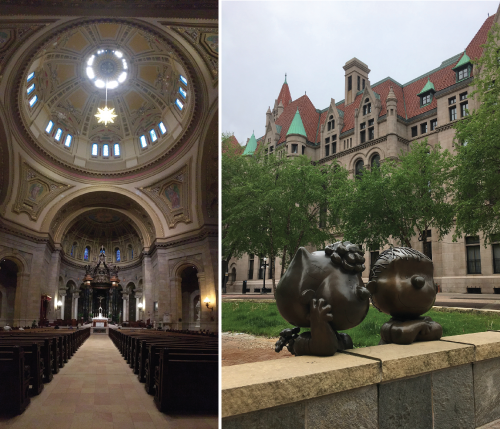
The second day of the conference was filled with inspiring talks. Here are a few take-away messages on the topic of community engagement that I found particularly thought-provoking:
- Volunteers should not only learn about scientific problems, but more importantly they should learn that they, as citizens, have the power and the responsibility to solve problems. Citizen science projects should empower community leaders.
- Scientists “cannot assume that if we just deliver information in the right way, everything will be better." Instead, we need to form a dialogue with the public and create a landscape of knowledge that includes implicit knowledge of communities and other forms of expertise.
- “Scientists need to acknowledge that there is no such thing as the ‘general public’ because people are all individuals” with their own goals, motivations, and interests. In order to successfully engage a community or stimulate behavioral change, scientist must tailor their message for specific audiences.
- Moving from crowdsourced data collection to more holistic community-driven science requires a relevant place-based question. Applied transdisciplinary research not only answers scientific questions, but also bridges science and action.
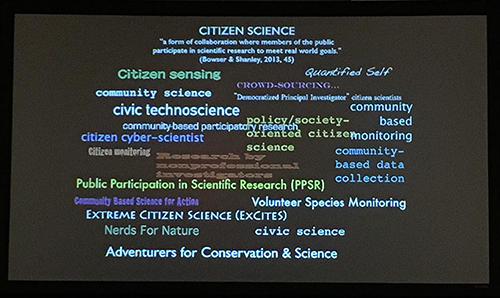
During our lunch break, I visited the Science Museum of Minnesota, which was nice enough to offer complimentary admission for conference attendees. I stepped carefully through a crowd of elementary school students wearing matching t-shirts, and grabbed a map of the exhibits, noticing that printed on the cover in parentheses were the words, "This is no ordinary museum". Yes, indeed. As soon as I entered the exhibit area, I was greeted by a 60-foot astronaut, and a view of three floors of interactive museum exhibits!
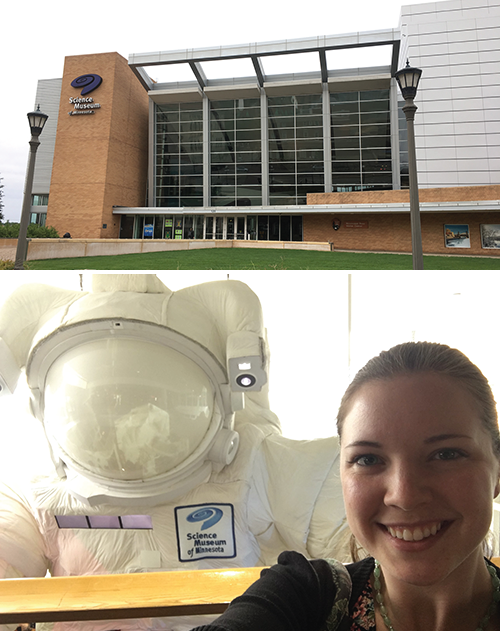
This museum was the one of the most fun places I have ever visited, and I cannot recommend it highly enough! The exhibits were phenomenal and it was so exciting to see people of all ages enjoying science all around me. Students donned lab coats and used lab equipment to conduct microbiology experiments. Visitors touched fossils and learn about paleontology and geology in the company of dinosaur skeletons. Teenagers learned about the human body by "unwrapping" a mummy using 3-D imaging. Kids burned off some extra energy in the "Sportsology" exhibit, racing a T-rex and comparing high jumps with famous athletes. Teachers led students through an exhibit devoted to exploring the historical, sociological, and biological dimensions of the concept of race. Families learned about kinetic energy at a live show, where museum staff conducted an experiment comparing the elasticity of 'bouncy' rubber balls and 'smooshy' meatballs. Of course, visitors also enjoyed an exhibit on the ecology and natural history of the city's pride and joy: the Mississippi River, which flows outside the museum's windows.
My absolute favorite museum exhibit of all time was the Collector's Corner, which invites kids to find natural objects, research them, and then share their knowledge with museum staff members, who award points based on both the explanation and the object itself. The kids can then trade their points for a new item, such as a cicada shell, a piece of pyrite, or a shark tooth. The kids loved this, and as an avid collector myself, I really loved watching them getting excited about nature, exchanging their treasures, and growing their own collections!
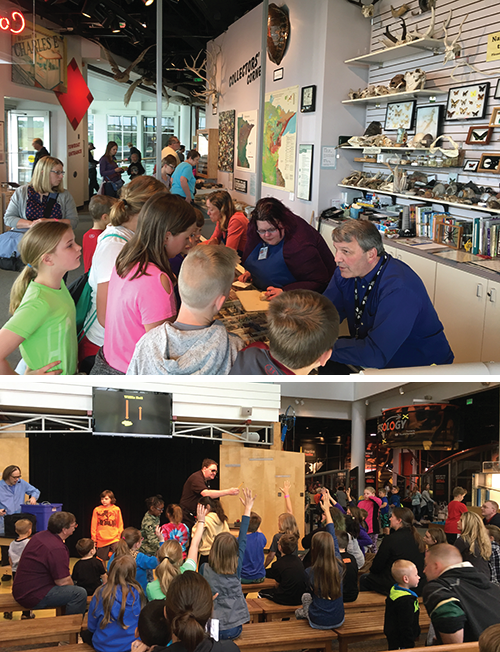
Back at the conference, many presenters incorporated surprising communication elements into their talks to make them stand out and engage their audiences beyond content. One speaker, Susanne Hecker from the Helmholtz Centre for Environmental Research, gave her presentation in the form of a story. She began with a hand-drawn illustration of a scientist named Hanz, who communicated his research to a ‘knowledge-deficit’ public from within the ‘house of science’. Over the course of her presentation on “Communication in Citizen Science,” Hanz gradually became an effective and engaging science communicator, eventually collaborating with non-scientists and learning from others’ expertise. Another speaker gave an atypical presentation when he video-called into the conference from Austria, and participated in a panel discussion after presenting his research. Later in the day, Martin Thiel from Universidad Catolica del Norte, began his talk by acknowledging the infamous ‘afternoon slump’ and made his audience laugh when he bribed us with a chance to win a book if we resisted the urge to take a nap. At the end of his presentation, he asked everyone to write down their name and the most important thing they learned, and then randomly chose a winner. I thought this was a fun activity because it engaged the audience while also giving the speaker a sneaky way to get feedback on his presentation. Clever!

The closing reception in the evening was open to the public, and gave citizen science projects and scholars an opportunity to network with each other and with residents of the Twin Cities. Projects set up booths with fun giveaways, such as packets of sunflower seeds, bumper stickers, and even origami orchids. Many people also gave demonstrations for various types of monitoring equipment, apps, citizen science project portals, and data-sharing services.
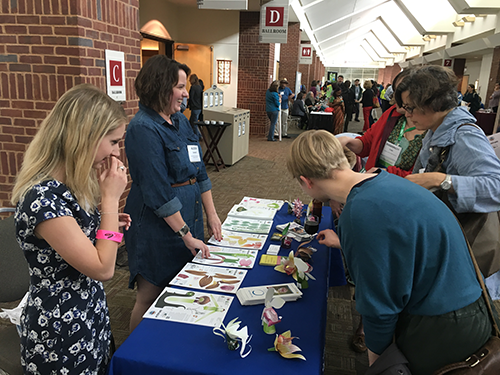
Inside the ballroom, there was a panel discussion of the recently-released public television series about citizen science, called "The Crowd & the Cloud". Series host (and former NASA Chief Scientist) Waleed Abdalati, and the show's executive producer, Geoffrey Haines-Stiles, shared their experiences from developing the series and invited leaders of citizen science projects featured in the documentary to join them onstage and offer reflections.
Abdalati mused that studying the Earth changes the "way we understand our world and ourselves," and told us how he came to appreciate the power of perspective through both space research and citizen science engagement. “As a scientist, data are powerful,” he said. Projected behind him was the “Blue Marble” photo of the Earth that was taken in 1972 and revolutionized the way humans understand our planet. He continued, “However, as a human, getting up close and personal with people is even more powerful”. Citizen science can connect scientists with other people and engage the public in scientific discovery. Abdalati urged us all to remember that the “best way to get high-quality data is to have people care passionately about what they’re measuring. As Cousteau said, ‘People protect what they love’”.
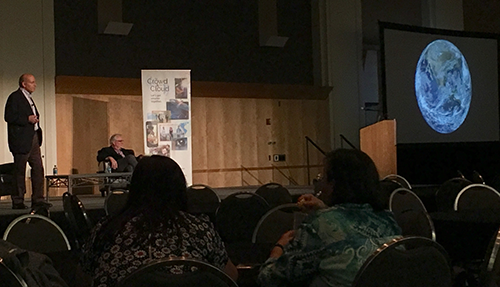
All in all, this conference was a great opportunity to learn more about citizen science and connect with others who share some of my interests and passions. Messages of diversity and inclusiveness permeated throughout the conference, which welcomed participants from all walks of life, representing several countries (I counted at least 17), and states across the USA. Maryland had especially strong representation, with attendees from IAN, UMCES Appalachian Lab, SERC, and the University of Maryland College Park, to name a few. A main theme that I pulled from the conference is that science can and should be done for the people, and by the people, and scientists can do better applied science and empower communities by creating opportunities for public collaboration. Bruce Lewenstein summed this up beautifully in his talk: "Science doesn't just happen in the laboratories of the top universities in the world. Science happens every minute of every day, all around us!"
About the author
Suzanne Webster
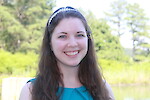
Suzi Webster is a PhD Candidate at UMCES. Suzi's dissertation research investigates stakeholder perspectives on how citizen science can contribute to scientific research that informs collaborative and innovative environmental management decisions. Her work provides evidence-based recommendations for expanded public engagement in environmental science and management in the Chesapeake Bay and beyond. Suzi is currently a Knauss Marine Policy Fellow, and she works in NOAA’s Technology Partnerships Office as their first Stakeholder Engagement and Communications Specialist.
Previously, Suzi worked as a Graduate Assistant at IAN for six years. During her time at IAN, she contributed to various communications products, led an effort to create a citizen science monitoring program, and assisted in developing and teaching a variety of graduate- and professional-level courses relating to environmental management, science communication, and interdisciplinary environmental research. Before joining IAN, Suzi worked as a research assistant at the Marine Biological Laboratory in Woods Hole, MA and received a B.S. in Biology and Anthropology from the University of Notre Dame.

